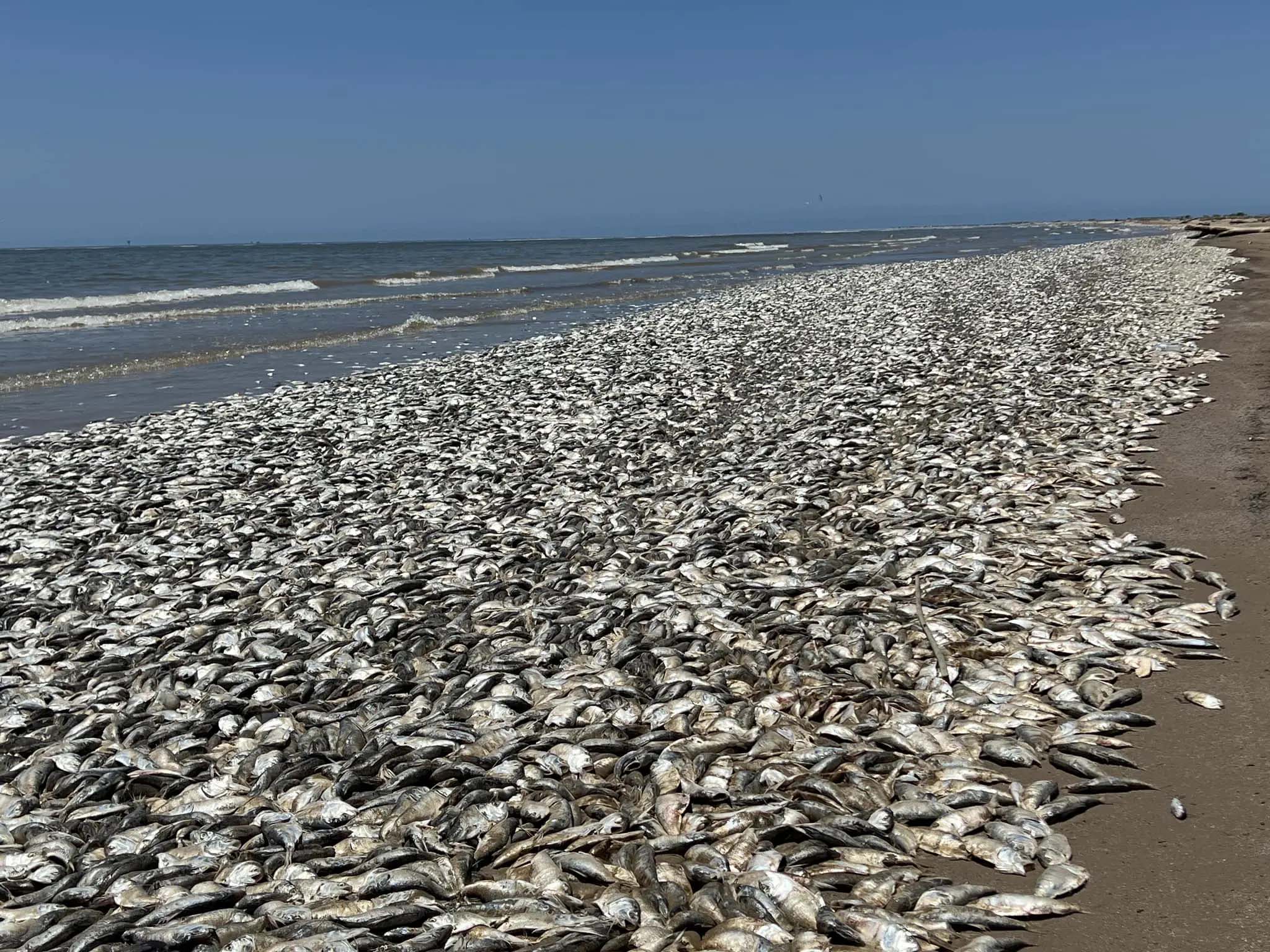It’s quite the spectacle, and an unsettling one at that: Thousands of dead fish washed up on Gulf Coast beaches in Southeast Texas last week.
What was going on? And what do experts say might be the cause of all of this?
Katie St. Clair, manager of the Sea Life facility at Texas A&M University at Galveston, joined the Texas Standard to discuss this phenomenon. Listen to the interview above or read the transcript below.
This transcript has been edited lightly for clarity:
Texas Standard: I understand these were mostly one species. Tell us a little bit about this species of fish and why they seem to be washing up on the shores.
Katie St. Clair: Yes. So these were Gulf menhaden, which belong to the Clupeid family of fishes – this also includes species such as the herrings and shad. And these are small bait fishes that form large aggregations in the thousands to hundreds of thousands. And they are often seen swimming close to our water surface. That makes them extremely susceptible to these low dissolved oxygen or hypoxic events.
Apparently this event that everyone’s been talking about, not just in Texas, but around the nation, happened at a particular county park. What was the significance of that, and why does it seem so localized?
So this event happened down at Quintana Beach, near Freeport, Texas, and near the mouth of the Brazos River. Texas Parks and Wildlife investigated with their Kills and Spills Team and determined that this fish kill was caused by a low dissolved oxygen event. And these types of fish kills are common in the summer when water temperatures increase, resulting in lower-than-normal dissolved oxygen levels.
And what does that mean as a practical matter for the fish? They can’t get the oxygen they need, and so they just start dying en masse?
Correct. These fish are going to absorb oxygen to breathe through their gills. When these dissolved oxygen levels crash out, there is no more oxygen for them to uptake, and they suffocate.
» GET MORE NEWS FROM AROUND THE STATE: Sign up for our weekly ‘Talk of Texas’ newsletter
Are the menhaden particularly susceptible to low oxygen levels?
Yeah. So these fish, they’re filter feeders, so they are feeding on phytoplankton or microscopic algae. And so they’re going to be attracted to these calmer areas where you have high levels of phytoplankton. And because they’re found in such high numbers – again, possibly hundreds of thousands – you have all of these fish swimming and actively requiring and consuming this oxygen. So when they hit these pockets of water that already have lower dissolved oxygen levels from various factors, they just use up that oxygen so quickly they’re unable to escape. And I believe the county officials down there noted that early in the morning they actually saw fish gulping at the surface trying to get oxygen.
With tens of thousands of fish washed up on the coast, that’s going to create an enormous cleanup problem – but apparently it’s not over. As I understand it, experts are saying to expect more of this. Is that right?
Yes. These types of events, specifically with fish kills as a result of lower-than-normal dissolved oxygen levels, are seasonal. We do have these events occur on our coast, occasionally; they are sporadic and very localized. But with ocean temperatures warming, we’re creating these conditions that are occurring on a more frequent basis. The warmer the water is, the less oxygen it holds. So cooler waters have more oxygen. So if you warm the water up, there’s less capacity to hold oxygen. And we can see these types of events.
I don’t want to put words in your mouth here, but are you suggesting that climate change means we’re going to see more frequent fish kills?
Possibly, yes. I mean, this is a disturbance that’s occurring. We know that climate change is causing a whole host of different conditions globally. And of course, when we think about our oceans and estuaries, certainly there is evidence of that.
What about the economic impact? How do these kills affect the people whose livelihood depends on Gulf Coast marine life – and for that matter, tourism as well?
One interesting aspect about Gulf menhaden is that they are commercially important. There is a fishery here on the upper Texas coast for menhaden that brings in millions of dollars to our economy. These menhaden are processed to produce fish oil and fish meal. And so certainly there is that economic standpoint from the fishery itself.
From a tourism standpoint, this does create a jarring sight to see. The county officials down there are trying to clean up by pushing these animals into the dunes and covering them with sand to just get them out of sight. But there is a benefit: As these fish break down and decompose, they’re going to release nutrients that can support our coastal plants that help stabilize our dunes. So there is some benefit, if you want to try to find a silver lining.













